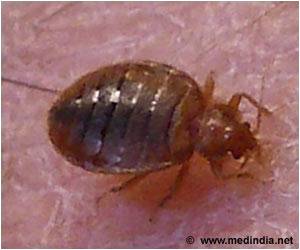Mexicans took new precautions amid fears that a new flu epidemic believed to have killed up to 81 people in the country could reach pandemic proportions.
Mexicans took new precautions amid fears that a new flu epidemic believed to have killed up to 81 people in the country could reach "pandemic" proportions and spread to the United States and worldwide.
Mexican Health Minister Jose Angel Cordova raised the probable death toll from the new multi-strain swine flu in Mexico to 81, including 20 already confirmed.Earlier, Mexican President Felipe Calderon published an order giving his government extraordinary powers to tackle the deadly outbreak, as at least two new cases were reported in the United States, bringing the total infected there to 10.
"This virus has clearly a pandemic potential," World Health Organization director general, Margaret Chan, said on Saturday.
The Geneva-based UN agency branded the outbreak "a public health emergency of international concern," following a meeting of its emergency committee.
In a statement it said it was recommending that all nations "intensify surveillance for unusual outbreaks of influenza-like illness and severe pneumonia".
In Mexico, 13 new suspect cases were reported in the past 24 hours and a total of 1,324 patients with flu symptoms were under investigation, Health Minister Cordova said.
Advertisement
The Mexico government has upped emergency measures that were put into place only on Friday.
Advertisement
Schools in those areas and also San Luis Potosi in central Mexico, the third most affected area, will remain closed until May 6, Cordova said.
The traditional Sunday mass was suspended in Catholic churches throughout the country.
Many Mexico City residents wore freely-distributed surgical masks on the streets Saturday, after authorities urged people to avoid contact in public.
Apart from the capital, four other deaths were reported in central, northwest and southern Mexico.
Mexico City Mayor Marcelo Ebrard said that more than 500 sporting and cultural events had been canceled for at least 10 days.
Mexico City authorities have said they had more than one million doses of suitable antiviral drugs, in an urban area of some 20 million.
The government also assured citizens it had "sufficient" funds reaching 450 million dollars to combat the epidemic.
Across the northern border, health authorities in the central US state of Kansas confirmed two cases of swine flu on Saturday, bringing the total number of cases in the United States to at least 10.
One of the victims was still ill, while the other had recovered, Kansas health authorities said. One of the patients had recently traveled to Mexico.
"Both persons ... became ill with the same unique (H1N1) strain of swine flu that has been identified in Mexico, California and Texas," Kansas officials said in a statement read.
Earlier on Saturday New York officials said eight to nine students at a New York City school were suspected of having swine flu, although test results are still pending.
Meanwhile, a British Airways cabin crew staff member was being treated in a London hospital with "flu-like symptoms" after arriving on a flight from Mexico City, health officials said Saturday.
A hospital spokesman said the man was responding well to treatment.
"With infections in many different communities as we're seeing, we don't think that containment is feasible," said Anne Schuchat of the US Centers for Disease Control and Prevention (CDC).
Asian health officials went on alert and urged the public to be vigilant Sunday.
Governments across the region, which has in recent years been at the forefront of the SARS and bird flu epidemics, urged the public, and especially travellers, to be on guard for symptoms of the new multi-strain of swine fever.
In New Zealand, a 25-strong school group was quarantined pending the results of medical tests after returning from Mexico with flu-like symptoms, local health authorities said.
Results were expected later Sunday.
In Japan, airports tightened checks on passengers arriving from Mexico, with quarantine officials giving out face masks and using thermography imaging cameras to screen for passengers with a fever.
Like most governments in the region, Australia urged people who had recently returned from Mexico and had developed flu-like symptoms to seek medical advice.
South Korean health, agriculture and foreign ministry officials held an emergency meeting to discuss the issue, while in China, the health ministry said it was "paying close attention" to the situation.
The CDC said some Mexican victims had died from the same new strain of swine flu that affected eight people in Texas and California.
Dave Daigle, of the CDC, said a bird flu strain, two swine flu strains and a human strain had combined for the first time.
"The most worrying fact is that it appears to transmit from human to human," said WHO spokesman Thomas Abraham.
These features, along with the fact that unusually young healthy adults have fallen victim in Mexico, and not the very old or very young, have given rise to fears of an epidemic or even a pandemic.
According to the WHO, pigs have already been factors in the appearance of two previously unknown diseases that gave rise to pandemics in the last century.
If a pig is simultaneously infected with a human and an avian influenza virus, it can serve as a "mixing vessel" for the two viruses that could combine to create a new, more virulent strain.
Source-AFP
LIN











